Hidaka Fire Festival (Oshu City)
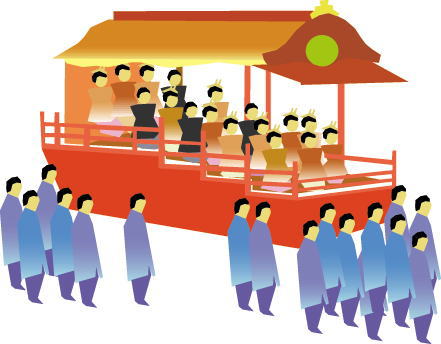
The festival started with the great fire of the Edo period and has a history of about 300 years. Girls and boys called "dolls" dressed in fortune stalls throughout the town ride a drum according to the shamisen played by a large girl.
The climax is the "slashing" where stalls gather in front of Mizusawa Station. The sound of drums echoes in the spring night sky. In April, when the cherry blossoms in the Mizusawa region are also full, it is a festival that makes you feel spring.
Spring Fujiwara Festival (Hiraizumi Town)
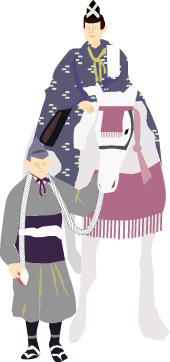
Golden Week is a festival that focuses on Chuson-ji and Motsu-ji. The best thing to see is the Yoshitsune Higashi-uri procession from the place of the Houken-Yoshikei encounter on the ship of Motsu-ji Osengaike to Chuson-ji Temple Golden Hall.
The procession over a total of 100 people, centered on popular actors dressed as Yoshitsune, is like a colorful Heian picture-roll. In addition to this, Fujiwara Chiyo Suichi, an infant procession, the Beqing Force competition that competes in power, and the colorful events reminiscent of offerings of Noh and Mai and traditional events.
Esushi Haku Festival (Oshu City)

It is a festival of citizen's total participation that unfolds the whole of Oshu city every year in early May. It is a new festival that has transformed the Iwatanido Fire Prevention Festival, which has a history of about 300 years, into a form that makes it easier for the general public to participate.
At this festival, deer dances of 12 citizens dance at the same time, and “100 dance groups dance” and 10 festival stalls walk through the city, and a parade of 5,000 people in the city of Esujii, who celebrate the year of the city, overwhelms the viewer You
Tochigi Festival (Morioka City)
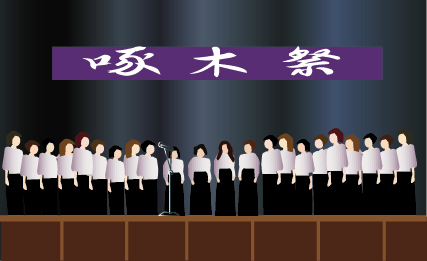
Ishikawa Tochigi, a national poet, was born in Tamayama village Shimin (presently Tamaoka-ku Shiori, Morioka city). It was Tochigi who went to Tokyo for the purpose of literature, but the life of the family was painful, bleached to Hokkaido and Tokyo, and never returned to his hometown Shimin.
A beautiful spring is brought in May every year when Tamayama village Shimin has never returned to his hometown Shibori in honor of Ishikawa Tochigi, a choir of elementary school students and women, holding theaters and symposia related to Tochigi and a nostalgic poet In honor of that feat in Tochigi.
Chag Chag Mako (Morioka City, Takizawa City)

early summer. The noise of the bells rang in the city. It is a procession of about 100 horses dressed in gold, silver and purple clear clothes.
After being broomed at Takizawa-shi Hagimae Shinto shrine, head for approximately 15 passes to Hachimangu Shrine in Morioka. I appreciate the daily labor of horses and pray for their safety and health. It is an event unique to Iwate that has a history of over 200 years. Summer will approach Iwate when Chag Chag Mako passes by.
Morioka Sansa Dance (Morioka City)
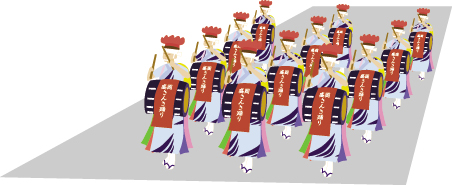
A long time ago, bad demons appeared and tormented the villagers. It is the god of three stones that caught it and beat it. The demon vowed not to come here anymore and left the bill on the rock and fled.
It is the occurrence of the place name of Iwate, the impatience. The villager was happy to dance around Sansho and this became Sansa dance. Anyone can dance the Sansa dance which has long been in the Morioka region.
Now it has become a festival representing Iwate. The sound of 5,000 drums, one of the best in Japan, is spectacular.
Kitakami Michinoku Entertainment Festival (Kitakami City)
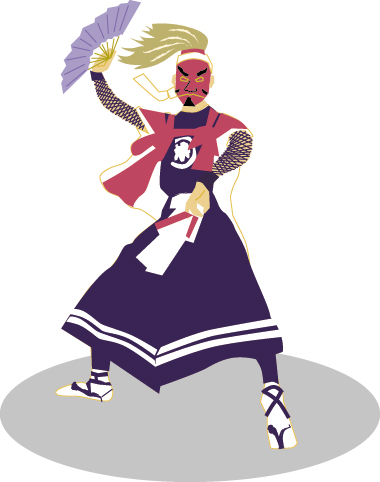
A brave, oni-ken dance that has a sword on its face and dances as if it jumps along with a drum. Kitakami city is the village of Oni-Ken Dance. Other than that, deer dance, Kagura and other Kitakami treasure troves of folk art. Kitakami Michinoku Performing Arts Festival is where folk performing arts gather from various parts of the prefecture, mainly from performing arts in the north, and also from outside the prefecture and from overseas.
The three days of the beginning of August will be the venues where various performing arts will be played. Brave dances, elegant dances, and other performing arts that can not be seen anywhere else are three days that folk entertainment fans can not miss.
Deer dance (Oshu city)
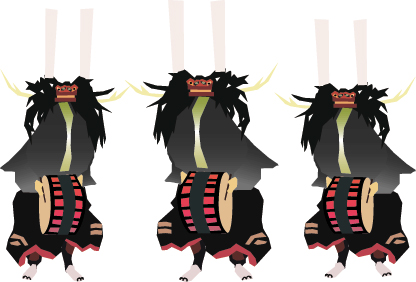
Deer dance is a group dance that dances in costumes that mimic deer. It has been passed on as a Shinto performance in hope of the ancestors' service, the deportation of evil spirits, and the rich harvest of five cereals.
The deer dance that is transmitted to Oshu City is a pair of Sasara standing on the back, with a deer horned head, a black hair of a horse, and a drum on the front waist. It belongs to the "Taiko Odori Shika Odori" and is characterized by its own singing, singing and dancing.
Usually they dance in groups of eight, and they are divided into two groups: the Gozan flow and the Kanetsu flow.
